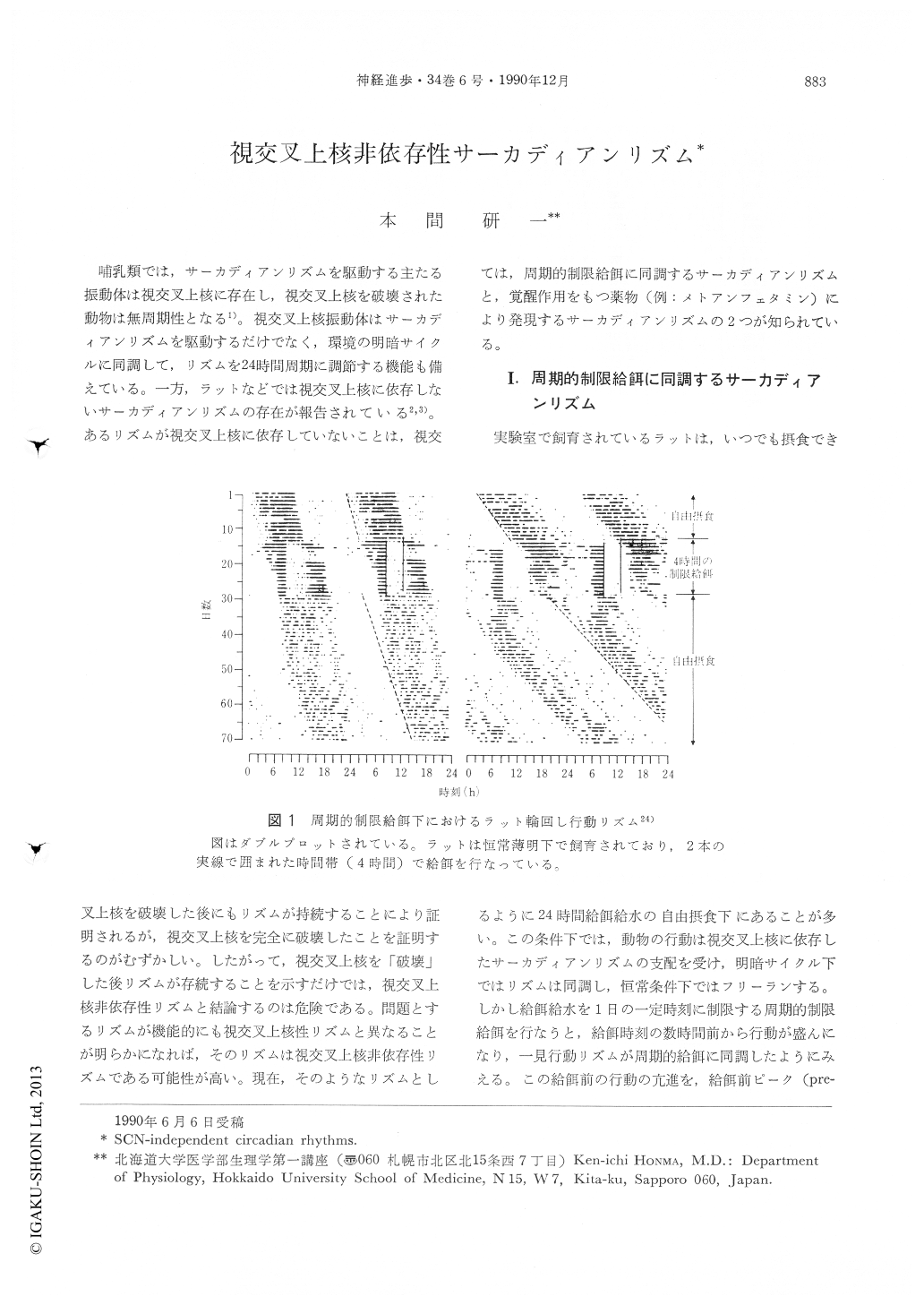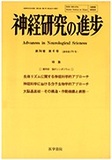Japanese
English
- 有料閲覧
- Abstract 文献概要
- 1ページ目 Look Inside
哺乳類では,サーカディアンリズムを駆動する主たる振動体は視交叉上核に存在し,視交叉上核を破壊された動物は無周期性となる1)。視交叉上核振動体はサーカディアンリズムを駆動するだけでなく,環境の明暗サイクルに同調して,リズムを24時間周期に調節する機能も備えている。一方,ラットなどでは視交叉上核に依存しないサーカディアンリズムの存在が報告されている2,3)。あるリズムが視交叉上核に依存していないことは,視交叉上核を破壊した後にもリズムが持続することにより証明されるが,視交叉上核を完全に破壊したことを証明するのがむずかしい。したがって,視交叉上核を「破壊」した後リズムが存続することを示すだけでは,視交叉上核非依存性リズムと結論するのは危険である。問題とするリズムが機能的にも視交叉上核性リズムと異なることが明らかになれば,そのリズムは視交叉上核非依存性リズムである可能性が高い。現在,そのようなリズムとしては,周期的制限給餌に同調するサーカディアンリズムと,覚醒作用をもつ薬物(例:メトアンフェタミン)により発現するサーカディアンリズムの2つが知られている。
In rats, the suprachiasmatic nucleus (SCN) is regarded as the location of the circadian pacemaker which entrains to the environmental light cycle. The total destruction of SCN was repeatedly demon-strated to abolish the circadian rhythms in a variety of functions. However, two rhythms in the circadian domain are known to persist after the SCN removal ; the food-entrainable rhythm and methamphetamine-induced rhythm. These circadian rhythms have different functions from those of the SCN dependent rhythm, and modify the overt circadian rhythms by interacting with the latter rhythm.

Copyright © 1990, Igaku-Shoin Ltd. All rights reserved.


